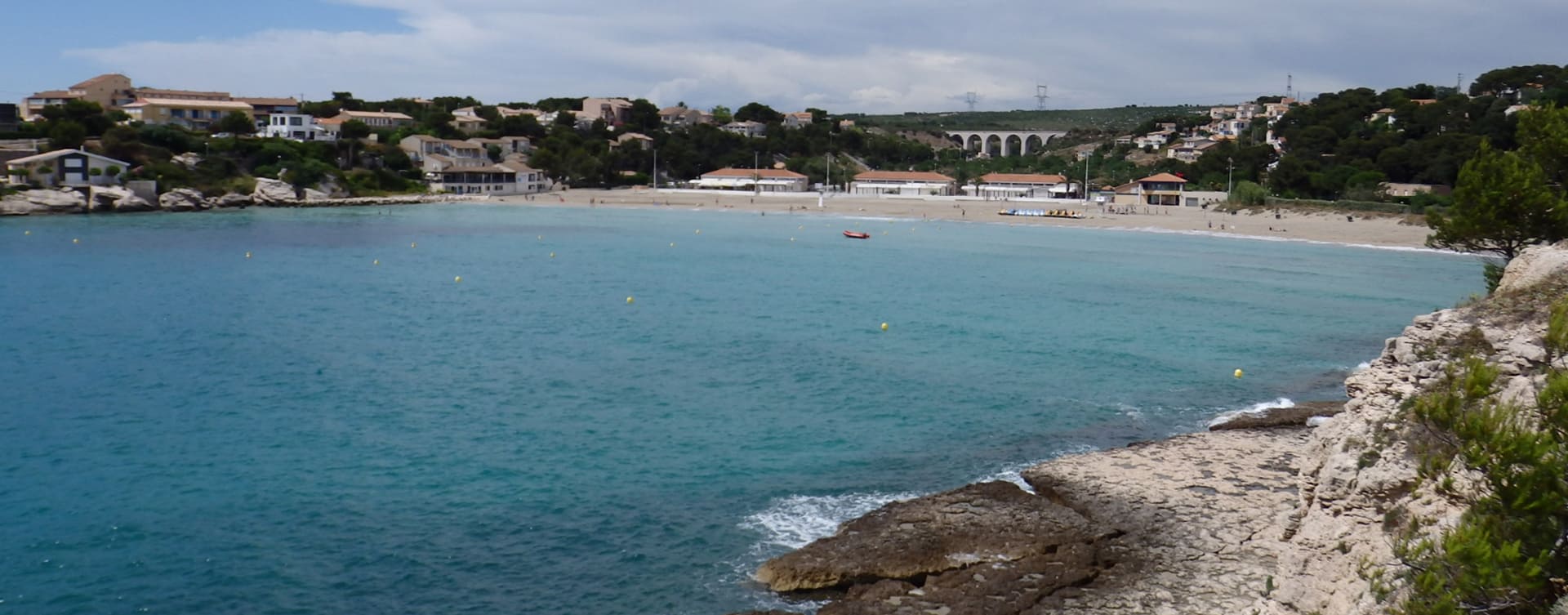2 days in Martigues
Start the day with a bird’s eye view.
Head for Chapelle Notre Dame des Marins for a magnificent 360° panorama over the city surrounded by water, canals and bridges. The city has three districts: Ile, Jonquières and Ferrières.
DAY 1: STROLL AROUND THE CITY CENTRE
L’ILE - the island district
FERRIERES
Wander along the marina between the magnificent Théâtre des Salins, an Italian-style theatre with a sober pink-limestone façade and the fishermen’s quay. Then head for the Gnidzaz cinematheque and discover the exemplary collection of a passionate cinema enthusiast with reels, scopitones, projectors and more.Visit Musée Ziem for the works of Félix Ziem, artists from the 1850-1925 Marseille school, Fauvist landscapes, contemporary art, archaeological and ethnological collections, then stop for lunch or a drink in the shade of mulberry plane trees on the beach at Plage des Ferrières facing the Étang de Berre.
JONQUIERES
Cross the lift bridge which separates in two when it opens to let ships with air draft of over 5.8 m pass through. Continue along Quai Alsace Lorraine to Chapelle de l’Annonciade. It has remarkable interior decoration with trompe l'oeils, sculptured panelling, a guilt altarpiece and a Venetian-style painted ceiling. Carry on to the Cours du 4 Septembre, a majestic esplanade with bars, brasseries, restaurants, and night markets where craftsmen sell their wares in summer on Wednesdays and Saturdays.Practical information:
• Travel between the three Martigues districts by boat shuttle and bus line no. 20.
DAY 2: THE CÔTE BLEUE
On the second day, head out of the city to the Côte Bleue and explore the fishing port of Carro, La Couronne village, and the coastline dotted with sandy beaches and rocky inlets.Festooned with white coves, the coast stretches for 25 km along the Mediterranean sea between the Camargue and the port of Marseille. The coastline abounds with charms all year round - both idle and active.
In La Couronne, a former quarrymen’s village,
visit the church in the heart of the village built in the 17th century. The church bears traces of the former quarry activity: inside there is a display case with quarrymen’s tools, and outside, their signatures on the corner of the steeple.
Carry on to the traditional market on Wednesdays and Saturdays and buy ingredients for your picnic by the sea.
In Carro - a former fishing village
The fish market takes place every morning on the traditional fishing port. About 40 professional fishermen still operate in the Martigues maritime district which stretches off the coast from Saintes Maries de la Mer to Sausset les Pins.
The catch varies with the season including bass, sea bream, red mullet and fish for soup.
Visit the small Carro museum above the Cercle des Pêcheurs. Inside you will find a collection of old photos and many common fishing objects, from the sea and the land, spanning from antiquity to the present day. The collection includes over 150 objects and several hundred photos and old documents.
visit the church in the heart of the village built in the 17th century. The church bears traces of the former quarry activity: inside there is a display case with quarrymen’s tools, and outside, their signatures on the corner of the steeple.
Carry on to the traditional market on Wednesdays and Saturdays and buy ingredients for your picnic by the sea.
In Carro - a former fishing village
The fish market takes place every morning on the traditional fishing port. About 40 professional fishermen still operate in the Martigues maritime district which stretches off the coast from Saintes Maries de la Mer to Sausset les Pins.
The catch varies with the season including bass, sea bream, red mullet and fish for soup.
Visit the small Carro museum above the Cercle des Pêcheurs. Inside you will find a collection of old photos and many common fishing objects, from the sea and the land, spanning from antiquity to the present day. The collection includes over 150 objects and several hundred photos and old documents.
Windsurf enthusiasts love Arnettes, a spot particularly well-known in France for its perfect conditions.
Prefer a swim? The little beach in Carro near the port is ideal for families. Not much further, the sandy Verdon beach is the widest on the Côte Bleue. Between the two beaches, a cliff trail follows the Cornice de Baou Tailla. It is a spectacular reminder of the antique quarries where shelly limestone was extracted until the 19th century for building monuments in Marseille.
Prefer a swim? The little beach in Carro near the port is ideal for families. Not much further, the sandy Verdon beach is the widest on the Côte Bleue. Between the two beaches, a cliff trail follows the Cornice de Baou Tailla. It is a spectacular reminder of the antique quarries where shelly limestone was extracted until the 19th century for building monuments in Marseille.
To the south of La Couronne, the red lights of the 35m lighthouse on the Cap Couronne guides seafaring vessels. Built in 1959, the only lighthouse of its kind on the Côte Bleue is the ideal spot for a view of the port of Marseille.
Carry on to Ste Croix beach and stop at the Roman chapel overlooking the sea with rocky inlets. The last stop of the day is a striking site: the charming Port des Tamaris between Boumandariel and Ste Croix coves. This discreet cove provides safe harbour for the local fishermen’s colourful boats.
For hiking enthusiasts: the 11km coastal trail from Carro to Port des Tamaris.
Carry on to Ste Croix beach and stop at the Roman chapel overlooking the sea with rocky inlets. The last stop of the day is a striking site: the charming Port des Tamaris between Boumandariel and Ste Croix coves. This discreet cove provides safe harbour for the local fishermen’s colourful boats.
For hiking enthusiasts: the 11km coastal trail from Carro to Port des Tamaris.






